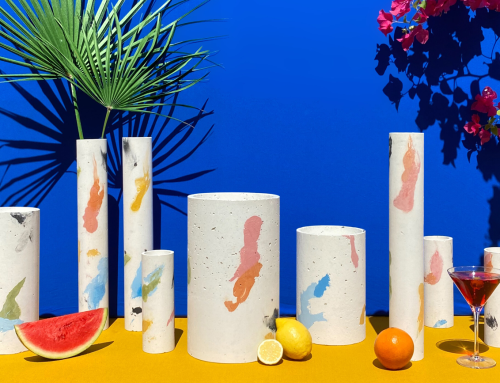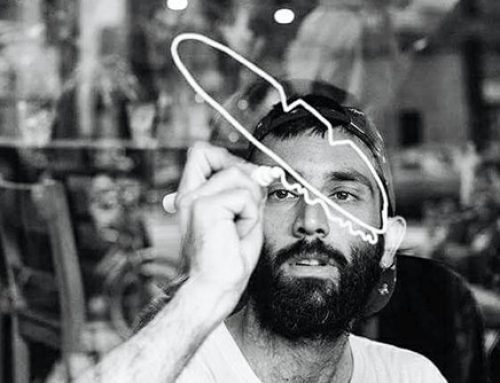Legend has it that one day a momma pig, distraught because her baby pig was sick, sought out the help of a man said to hold healing powers. The pig beseeched the man to cure her son. The man performed the miracle and, from that day forward, the pig swore to never leave his side. “She protected and helped him. She was always with him. We suppose that was as far as it went, that there wasn’t any love,” the storyteller said before letting rip a roaring laugh. Not two feet away, a statue of Sant Antoni with his faithful pig at his feet looked on. The saint’s pose with his hand lifting toward his chest and his lips slightly parted appeared to mean, “Who? Me?”
The sow apparently let the sacrilegious quip slide. And for good reason, because if there is one man who embodies all things porcine in Catalonia, it must be Jordi-Joan Alsina. He is after all the keeper of this official Sant Antoni del porquet statue which each January leads a procession for the “blessing of the animals” by the saint, as part of Barcelona’s Tres Tombs festivities in January. That honor falls to Alsina as the president of honor of the cultural association L’Arca de Noè, which helps promote traditional Catalan festivals.
But even removing the divine connection, his résumé is impressive. The 59-year-old Alsina is a fifth-generation butcher and proprietor of La Cansaladeria Alsina, which has been providing Sants with its specialty, butifarra d’ou, and other pork-based delicacies since 1883. Add to that a book on medieval cooking and a 10-year stint as a university professor teaching nutrition. Oh, and don’t forget his honest-to-god moniker of “Porc Senglar” as member of L’Arca de Noè, a club started in 1927 by the artist Santiago Rusiñol for bohemians whose members go by the names of animals. “There is nobody like me,” Alsina said on a mid-March Monday in the small office at the back of his butcher’s shop. Balding and heavy-set, he identifies with his beastly nick name because of the wild boar’s “free spirit” that helps it flourish even alongside humans. “I have a certain connection with them,” he said. “I have sat near wild boar in the woods without any problem.”
La Cansaladeria Alsina is one of the few holdouts on carrer Canalejas near the Mercat de Sants, a street where most storefronts are shuttered for good. The abandoned store next door still shows the black smoke stains from a fire that threatened to take Alsina’s shop with it. Business was slow, allowing Alsina’s meandering lecture through the past, present and future of pork to flow uninterrupted.
The trade of slicing and seasoning pork that has left Catalonia with roughly two pigs for every person started, Alsina said, thanks to the Romans. “The Romans came here looking for the right climate and enough water to raise good pigs because it was the basis of their diet.” He said they found what they were looking for around Vic, and even built a road to bring the pigs to Barcelona. He said the Muslim conquest of the region pushed pork production northwards where it was concentrated around Girona, until it again followed Christianity’s spread.
Alsina considers himself one of the endangered yet resilient breed of artisan butchers. “The pork industry has changed a lot,” he said. “It’s due to the economic situation, sometimes our need to rush, people without time going to any old supermarket, buying what they need and heading home. That means that there are fewer and fewer of us artisans left. And we defend artisanship and quality of a different kind.”
For Alsina, the key is that an artisan has the expert eye and touch. “A pig arrives and I say it would be good for making sobrassada, or another one would be good for butifarra, and by touching the meat I know what I can use it for,” he said. The industrial method used in factories takes the opposite approach. It minces and mixes all kinds of meat of varying qualities together. Then, the factory makes all its products, from a soft sobrassada to a leathery fuet, out of the same lump. “So they have to bring in the chemists, the pharmacists and the biologists so that they have the correct flavor,” he said.
Alsina compares his jamón dulce with a lifespan of seven days to the industrial counterpart that needs preservatives so it can last at least six months and make it from the factory to the store and then to the fridge. He said that the industrialization of pork is all about packing more feed faster into the pig, in order to get the pig fattened up and on its way to an early death. “Before, a pig was slaughtered after 12 or 13 months. Today, it is slaughtered after three or four months,” he said. “If they were fed ecologically, we couldn’t afford it.”
But all is not bleak for the trade blessed by Sant Antoni. While the masses flock to Mercadona, Alsina has faith that “there will be people who want the artisan touch.”








